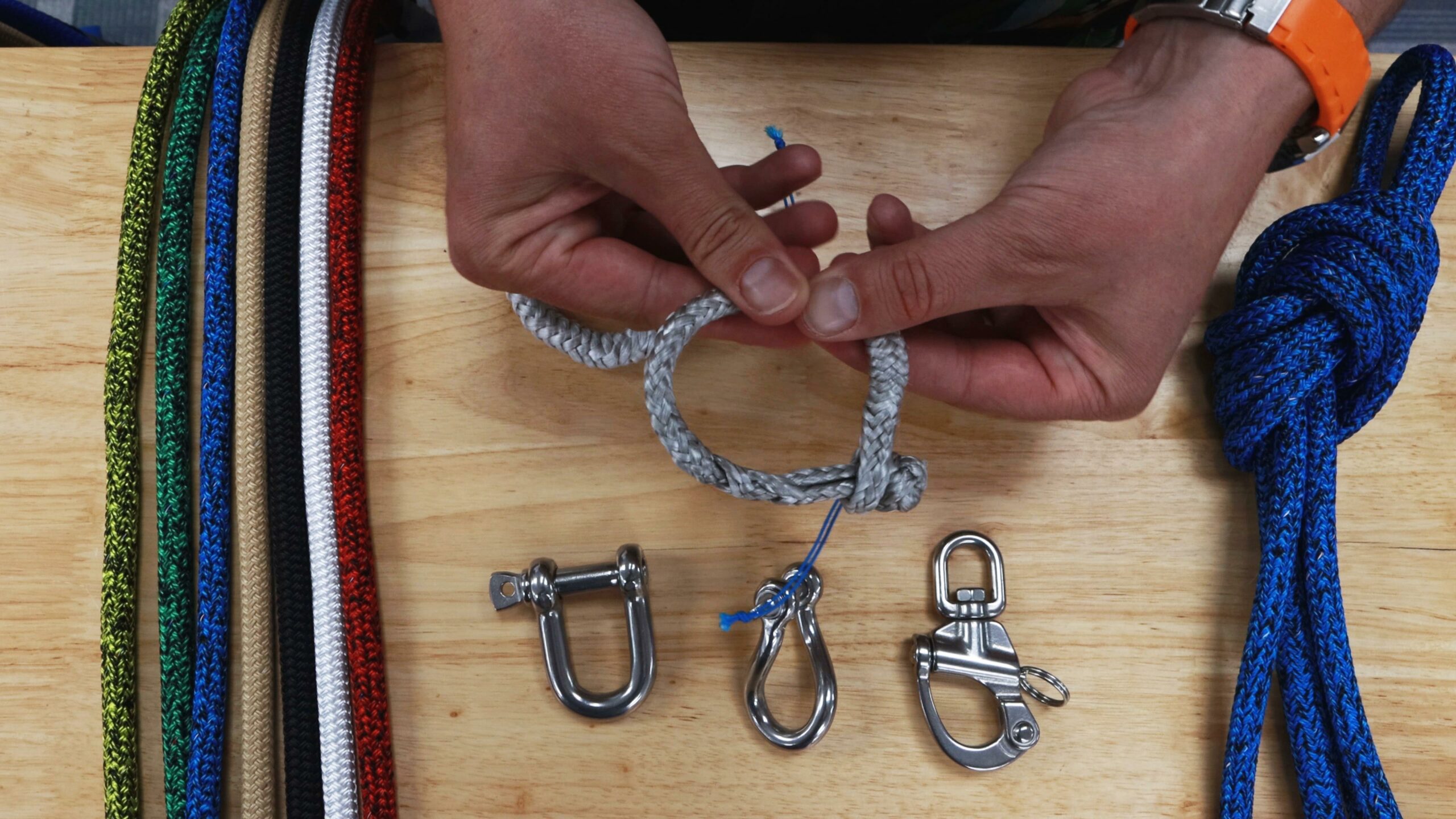Soft Shackles vs. Hard Shackles
When it comes to sailing, the use of shackles is crucial for securely connecting various components on a boat. Traditionally, hard shackles made of steel have been the go-to choice. However, as sailing enthusiasts embrace modern advancements, soft shackles have emerged as a lightweight, safer, and more versatile alternative. In this article, we will explore the benefits of soft shackles and how they have revolutionized the sailing industry.
The Resurgence of Soft Shackles in Modern Sailing
In an era dominated by commercial sailing, sailors relied on knots and soft shackles to interconnect different parts of their ships. However, the industrial revolution brought about a significant shift, with steel becoming the preferred material for ropes, shackles, and other sailing essentials. Fortunately, the rise of recreational sailing and the introduction of high-modulus polyethylene lines, also known as high-molecular-weight polyethylene, have paved the way for the resurgence of ropes and knots. This revival has led to the reintroduction of the soft shackle to modern sailing.
Lightweight and Strong: The Advantages of Soft Shackles
Soft shackles offer several advantages over their hard-shackle counterparts. First and foremost, they are significantly lighter, making them an ideal choice for sailors looking to reduce weight on their boats. This weight reduction can have a positive impact on a vessel’s performance, especially in competitive sailing scenarios. Furthermore, despite their lightweight nature, soft shackles boast exceptional strength, often surpassing the strength of their stainless steel equivalents. This increased strength provides sailors with the confidence they need when facing challenging sailing conditions.
Safety First: The Superiority of Soft Shackles
One of the key benefits of soft shackles is their superior safety features. Unlike hard shackles, which can cause injury upon impact, soft shackles are designed to be safer for sailors. They are unlikely to cause harm if accidentally struck against a person’s head or hand. This added safety factor is particularly important in situations where crew members are frequently handling rigging and other sailing equipment.
Boat-Friendly and Noise-Free: Soft Shackles for Gentle Handling
Moreover, soft shackles are gentle on the boat itself. Traditional metal shackles have a tendency to rattle and create unnecessary noise when not under load. They can also damage toerails, masts, and decks. Soft shackles, on the other hand, articulate better and do not produce disruptive sounds during periods of inactivity. Additionally, their softer material helps protect the boat’s surfaces from unnecessary wear and tear.
Ease of Use and Versatility: Practical Applications of Soft Shackles
The ease of use is another advantage of soft shackles. Unlike hard shackles that require a knife or tool to open, soft shackles can be easily opened by hand. This convenience makes them a practical choice for sailors who need to quickly adjust or replace shackles during sailing maneuvers. Furthermore, soft shackles find versatile applications beyond connecting sailing components. They are ideal for securing tarps, sail covers, life rings, and deck gear. Even attaching halyards becomes simpler and more efficient with the use of soft shackles.
Longevity and Cost-Effectiveness: Soft Shackles and Resistance to Chafe
Soft shackles also offer resistance to chafe, which can be attributed to the slippery nature of the dyneema/stirotex material commonly used in their construction. This resistance to chafe ensures the longevity of the shackles and reduces the need for frequent replacements, making them a cost-effective solution in the long run.
Considerations and Exceptions: When Soft Shackles may not be Suitable
However, it’s important to note that there are certain situations where soft shackles may not be suitable. When unimpeachable reliability is required or when dealing with heavily burred steel or sharp edges, soft shackles should be avoided. Similarly, in applications where rotation needs to be restricted, hard shackles may be preferred over their soft counterparts.
What About D Shackles or Twisted D Shackles?
D-shackles (also known as bow shackles) and twisted D-shackles (also known as anchor shackles) have slightly different designs and features, which lead to various advantages and disadvantages. Here are some advantages and disadvantages of both:
D-Shackle Advantages:
- Strength: D-shackles have a larger bow shape, which allows them to accommodate larger diameter pins and provide higher load-carrying capacities compared to twisted D-shackles.
- Versatility: The larger bow shape of D-shackles makes them suitable for various applications, including lifting, rigging, and securing heavy loads.
- Ease of Use: The wider bow provides more room for connecting multiple hooks, straps, or ropes, making them easier to attach and detach.
D-Shackle Disadvantages:
- Limited Swivel: D-shackles have a fixed shape, which can limit their ability to swivel under load. This can lead to undesirable twisting or torque on the shackle, reducing its efficiency in certain applications.
- Bulkier: Due to their larger size, D-shackles can be bulkier and heavier than twisted D-shackles, making them less suitable for applications where weight and space are critical factors.
Twisted D-Shackle Advantages:
- Swivel Capability: Twisted D-shackles have a twisted design that allows them to swivel more freely under load. This feature helps reduce torque and twisting forces on the shackle and connected components, making them ideal for applications where movement or rotation is important.
- Compact Design: The twisted design often results in a more compact shackle, which can be advantageous in applications where space and weight are limited.
- Increased Security: Twisted D-shackles often feature a more secure pin system, such as a captive pin or a bolt design, which reduces the risk of accidental release.
Twisted D-Shackle Disadvantages:
- Lower Load Capacity: Twisted D-shackles generally have a lower load-carrying capacity compared to D-shackles of similar sizes due to their narrower bow shape.
- Limited Attachment Space: The narrower bow might limit the attachment of multiple hooks, straps, or ropes, which can be a drawback in some applications.
Soft Shackle Advantages:
- Lightweight construction.
- Higher load-bearing capacities when compared to a shackle of the same diameter.
- Safer handling of lines or rigging when disconnected.
- Noise-free when rubbing against your rig.
Soft Shackle Disadvantages:
- Needs to be inspected more often.
- No limit to line rotation.
- Chafes on rough surfaces.
- Peace of mind compared to a metal shackle when dealing with heavy loads.
Embracing the New Era: Soft Shackles as an Attractive Alternative
Soft shackles has ushered in a new era for sailing enthusiasts. With their lightweight, strength, safety, and versatility, they have become an attractive alternative to traditional hard shackles. All of our lines come with either a hard shackle or soft shackle per your request.



